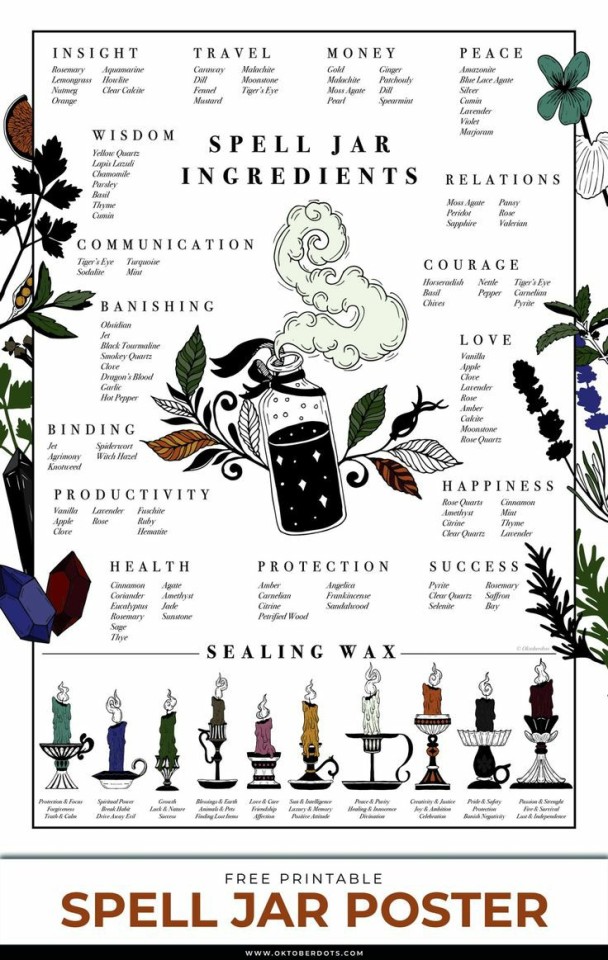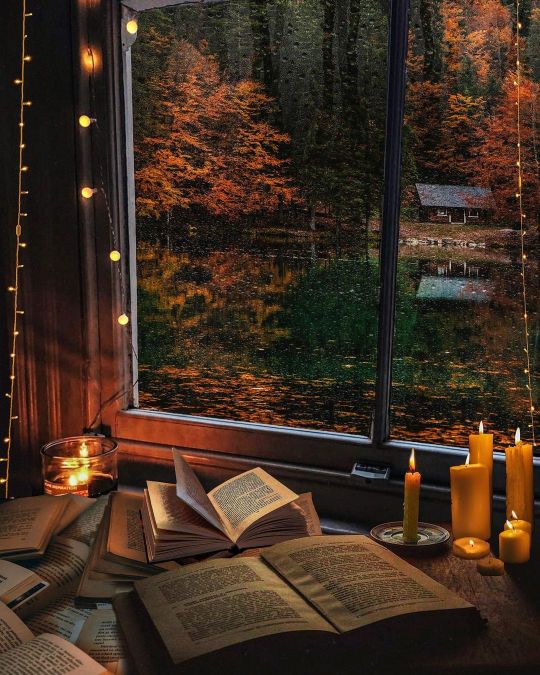friendly witch. she/herask me about tarot readings, spells, and more <3
Don't wanna be here? Send us removal request.
Text
Making A Spirit Construct
So I was loaned a copy of “Advanced Witchcraft” by Edain McCoy and there was a section about making an elemental that caught my eye. Basically it’s energy given life set to guard you/your house/, gather info, protection, whatever you tell it to do. I was intrigued by this concept but wasn’t fully feeling her methods or with the setup.
As a renter who moves more often than I’d like, and knowing I was moving within a few months, I almost didn’t make one. The way they were made by the book, they’re tied to a place and would have to be un-made when you leave. I didn’t want to have to do that. So then I decided to personalize my approach. :D
1. I changed the name. I wasn’t feeling the name “elementals” because to me those are already the spirit forms of the elements (salamanders, undines, sylph, and gnomes). So I call it a spirit construct, or sometimes a spirit form/guardian. But you can call it whatever feels right to you.
2. I decided to change the anchor. Instead of binding it to my home, I would bind it to a movable object! That way I can bring it with me whenever I have to move without going through the effort of taking it apart and making a new one at my new home.
3. Then my best idea came. If I anchor my spirit construct to a container, I can add physical objects to nurture it and give it attributes! Any container will work! Little baggies, a wooden box, a vase, a jar *witchiness intensifies* or hell, use a tupperware if that’s all you have!
So I’ll give you a quick rundown of the process I did to give you some ideas for what you can do to make yours.
So grab whatever container you have decided on. I ended up using this box.

I got it at a thrift store a while back and I had intended to use it for offerings but I found I almost always left my offerings outside so it never got used. But it’s super pretty. There’s a dragon on top and some hummingbirds on the side and it latches shut. (It’s ok if your container doesn’t.) So looking how it does, I have to say the box influenced how I visualized my spirit construct to look like. It definitely took on a Japanese air very much like the Yuki-Onna and Snow Maiden from Heroes Of Might and Magic 6.

But you can visualize it however you want. Humanoid, animal, flora, a mix, something more formless, etc.
So now you have your container and you’re starting to visualize what you want your construct to look like. Now you need to decide what you want to add to your container to add power. I’d personally recommend you start with 5 items and then any others can be added when you feel they need a boost or a charge, or you want to change their function. Here’s what I used.
1. A piece of paper with the name of your construct on it (You don’t have to name it, but I think it’d be rude not to. It will be sentient, after all), who they belong to, and some general instructions (You guard the house from negativity etc)
2. I tried to make the other 4 items from each element. So for fire I used rosemary to give it the power to remove negativity.
3. For water I took blue lace agate. It helps my construct to heal as well as to cast a soothing aura where it works.
4. For air I took a dandelion puff, which helps bring good wishes in as well as attracting good spirits
5 And lastly for earth I added lilac because my 3rd eye is not strong so my construct can help me see spirits and look more into my I-don’t-know-how-many past lives.
Now that you know what’s going into your spirit construct, we have the fun but exhausting part. The magic. It takes a lot of energy to make something sentient so I definitely recommend working with an energy source. The book recommended using the earth itself, I used the full moon. Other ideas could be a body of water, a large old tree, if you work with spirits you could ask them, if you’re close to a deity(s) you could ask them for energy, etc.
Make sure you have all your supplies with you and then cast your circle however you would normally. (Don’t want any nasties coming to mess up your hard work) Get yourself centered and focused in a half-meditative state. Take your container and add your components. Speak each one aloud (or say it in your mind if that’s preferred) and state its purpose. Close the container and hold your hand on or near it. Now you need to form a connection to your energy source, whatever it may be. Draw that energy into you and then out through your hands into your container. Visualize however you need to but I saw it as an egg of light, slowly growing as I fed it energy. The egg slowly started to change shape and morphed into the visualized form. (Don’t worry if you have to take a rest before it forms. The energy is attached to the container, it shouldn’t go anywhere)
So now you have your very own spirit construct! Just remember you need to treat it with respect, it has a mind and personality. It lives off your energy so make sure you keep it healthy, add new ingredients to the box, charge it under the full moon, or ground your energy into it when you finish a ritual. It’s here to help, but it’s not a slave. :) Any questions, feel free to send an ask
762 notes
·
View notes
Text
Yarrow and its Uses
Disclaimer: The below is the culmination of tedious, scrupulous research meant to assist with magical and medicinal practices. However, we lack a variety of lab-conducted herbalism trials in humans, so precautions are necessary. None of the below represents medical advice or is meant to replace treatment by a medical professional.
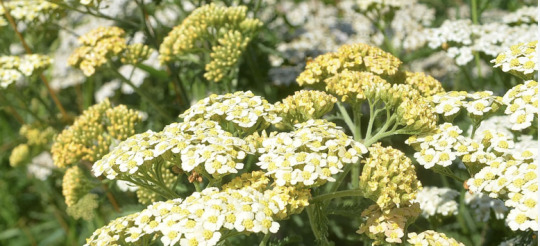
Identification and Profile:
Appearance: White, yellow, or pink flowers bloom from March to October. Very strong sweet smell. Often mistaken for hemlock or queen anne’s lace; leaves and flower shape are the most reliable identifiers for telling these three apart.
Distribution & Habitats: Native to temperate regions of the Northern Hemisphere. Thrives in meadows, roadside ditches, grasslands, and open forests. Attracts predatory wasps, ladybugs, and other beneficial insects. Reduces parasites in the nests of birds such as the common starling, who line their nests with it.
Associations: Yarrow was found in a neanderthal burial site in Iraq, suggesting its use by humans for more than 60,000 years. While yarrow has impressively consistent medicinal usage across cultures - namely healing and inflammatory pain relief - cultural and spiritual connotations vary. Yarrow’s botanical name refers to the legend that the centaur Chiron taught Achilles to use yarrow on the battlegrounds of Troy to heal wounds. Across the British Isles, yarrow was used to assist women in finding husbands, from divination to sleeping with the flowers under ones’ pillow. In Europe, it was known as a witch’s herb, occasionally called the Devil’s Nettle.
Uses: Topical: Effective antibacterial, astringent, antifungal, and antiseptic agent and can be applied to wounds to deter infection, speed up healing, and soothe inflamed or irritated skin. Ethanol extracted essential oil is the most lab-studied form of topical application, though dried flowers can be powdered, applied as whole dried flowers, or made into poultices and salves to wounds to stop bleeding. Oral: Flavonoids of yarrow make it a powerful antispasmodic and decent anti-inflammatory, most often used for gastrointestinal disorders. Yarrow can also induce sweat to break a dry fever. Essential oil of yarrow heals stomach ulcers. Navajo people chewed the leaves to reduce tooth and gum aches or inflammation in the mouth. Mild laxative properties. Mild sedative when consumed as tea. Tea also can be consumed to reduce headaches and cold symptoms, and sterols in yarrow can regulate menstrual cycles. Inhalation: Boiling the plant and inhaling the steam can reduce headaches and sinus inflammation. Dosage: Oral dosage is 2-4g of dried herb, flower and leaf, or 3g of whole flowers. Consecutive use is not recommended for longer than 2 weeks.
Interactions & Side Effects: - Adding nettle to yarrow consumed orally can reduce oxalate burden on kidneys. - Possibly an abortificant by relaxing the uterus, and may reduce breast milk supply while breastfeeding. - Increases production of stomach acid, lowers blood pressure, and increases risk of bleeding for those on blood-thinning medications. - Also interacts poorly with lithium based medications by increasing the body’s lithium retention.
18 notes
·
View notes
Text
Herbs For Protection
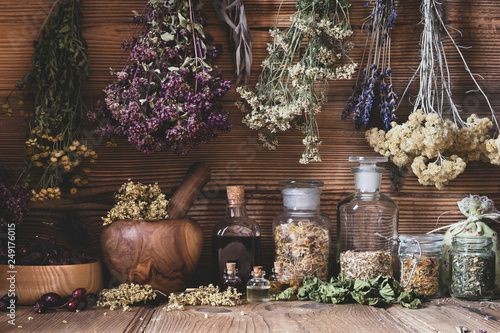
I share this article that I find interesting
The 35 Best Herbs To Keep Negative Spirits Away
By teaandrosemary2
There are so many elements to protection spell work, including wards, bindings, banishing, etc. It can be really helpful to know what protection herbs are strong and what purposes each herb is used for, especially in a pinch.
I find that learning about herbs can be kind of difficult unless you have a clear focus. Today, I’ll be talking about all of my favorite herbs for protection and the various ways to use them.
Hopefully, this post will help you when you’re in a pinch. You can stockpile some of these herbs and use them if you encounter negative entities or when you need to cleanse.
How To Use Herbs For Protection:
I’ll talk more specifically about how to use each herb for protection in the list below, however most herbs can be used in a few basic ways.
Make A Wash: You can create a “potion” using water and the herb to wash your hands in. I keep these washes handy and use them before doing spell work. This wash can also be used for your floor, home, or anything else that needs cleansing.
Brew A Tea: If the herb is safe to consume, brew a tea then drink it to protect your body and your energy. Make sure that you infuse the tea with your specific intention to activate the properties of the protection herb.
In The Bath: Again, make sure to check that the herb can be safely exposed to your skin. Once you are aware of the safety of the herb, drop some into your bath and do a protection cleansing. Bath spells are super easy and effective, so I use bath cleansings quite often.
Hang Dried Herbs: You can simply hang a bundle of dried herbs over any doorway or window that you want to protect. I hang spiritual protection herbs over my bed to keep entities away while I’m dreaming, and I also have a small bundle in my car for protection while traveling.
The Best Protection Herbs:
Here are my favorite herbs for protection with information on the specific protective properties and ways to use each herb. 35. Rosemary
If I had to choose, I would say that rosemary is one of my all-time top herbs for protection. Rosemary is so strong and requires very little activation.
35. Rosemary
Rosemary is specifically one of the best protection herbs for purification purposes. If you need to cleanse something, burn rosemary in the air, or keep a small satchel of rosemary around your home. You can also brew a potion (even just water and rosemary works well) to cleanse your hands before performing a ritual.
34. Salt
Though salt isn’t technically an herb, I had to include it high up on this list of protection herbs because salt is simply one of the best substances ever if you’re in need of serious protection.
A bowl of salt, left out, will automatically cleanse any room. I keep salt handy during all my rituals. You can also sprinkle salt in the corners of your home or across the doorway for strong physical wards, or you can cleanse your tools in it.
Salt is one of the best protection herbs for all types of protection and cleansing. However, I find that it works especially well for spiritual/energetic cleansing.
If you’re in a pickle, salt can be used as an offensive means of protection. Throw salt on the ritual or item that is causing problems and the energy will be forced to dissipate.
33. Rose
Rose isn’t the first thing that comes to mind when you’re looking for protection herbs, but it’s surprisingly effective.
The idea is that, because the thorns on the rose protect the flower, the flower will then transfer this protection to you or your spell work. Therefore, roses can be used for any type of protection because the power of the rose is mainly metaphorical.
I especially enjoy using rose petals in satchels, but I also make rose tea from time to time or even use the thorns after I get a bouquet of roses.
32. Dragon’s Blood
Dragon’s blood is actually resin from a tropical palm tree. It’s surprisingly popular in the witchcraft community because it has so many uses, including strong protective powers.
I find that dragon’s blood is especially useful if you need to ward off psychic attacks. You can burn dragon’s blood incense or put some of the resin in a protection pouch. It will also cleanse or clear any space.
31. Thorns
Though “thorns” aren’t actually an herb, you can source them on the stems of various flowers. I find that thorns are super useful in protection spells because of the metaphorical meaning.
A thorn quite literally protects the flower or plant from animals. When you use thorns in a spell, this power will be transferred to you or your spell.
Place thorns in a satchel or spell jar or use them in a tea, depending on the type of flower that you source your thorns from.
30. Mint
Mint is a truly versatile herb. It’s also one of the best herbs for protection. I specifically use mint as a home protective herb.
Hang bundles of mint around your door/windows, brew a home protection potion, use it in a spell jar, or even add it to your food or drink.
29. Rue
Because rue is super easy to grow, it’s also one of the most perfect protection herbs to use when you’re in a pinch. I always have some dried rue hanging around.
I find that rue is one of the best herbs for protection when you specifically need to banish. For example, I will sometimes incorporate rue into my freezer spells.
You can utilize rue to banish actual people, spiritual entities, or even bad habits. Rue can also be used in cord cutting spells.
28. Dill
Dill is one of the most useful protection herbs if you need to keep dark forces at bay. Negative entities, leeches, and energetic vampires can all be banished using dill.
However, dill is also said to stimulate lust, so I don’t recommend using it as a physical protection herb if you’re heading to a crowded location.
27. Mistletoe
Although mistletoe has many uses, it’s specifically one of the best herbs for protection when you need to physically protect yourself or your home.
26. Oak
Throughout history, the oak tree became a symbol of protection. The tree is strong and sturdy, so oak will provide the sort of protection that lasts over time.
Oak is one of my favorite protection herbs to use for bath/cleansing spells. It also works quite well in a jar spell or satchel. You can even use oak if you enjoy arts and crafts, because it’s easy to create an incognito piece that hangs on your wall for decor but also protects your home.
You can utilize oak leaves, bark, acorns, or even the dirt from under the tree to harness the protective properties of oak.
25. Black Pepper
Red pepper is more commonly used in witchcraft, but I personally love black pepper. It’s one of my favorite protection herbs when I want to energetically protect my home or my body.
Black pepper is especially useful for warding against the evil eye. In fact, it will sometimes return the evil eye to the sender. I use black pepper in spell jars or satchels, but it can honestly be useful in just about any type of protection spell.
Overall, black pepper works best to keep negative energy, curses, and malevolent spirits from harming you.
24. Red Pepper
If you’re looking for protection herbs that are quick and effective, you may want to consider using red pepper. After all, red pepper is super popular in the witchcraft community for a reason!
You can use red pepper flakes, chili powder, cayenne pepper, or whole chili peppers. In many cultures, a bundle of chili peppers is hung over the door to ward off intruders.
I find that red pepper can be used to protect against energy/entities and physical harm. It’s one of the strongest herbs for protection that works extremely quickly.
Red pepper can be aggressive offensively and may return negative energy or even physical force to the sender, so don’t use it on anyone you want to stay close to.
23. Garlic
Vampire legends are definitely based on some truths: garlic is one of the most potent protection herbs. However, garlic can be used against basically anyone, not just vampires.
In witchcraft, garlic is used for spiritual protection, exorcism, the repulsion of vampires (energetic or otherwise), and protection against negative magic.
It can be used for both spiritual and physical purposes. Garlic even kills off disease, so it’s one of the best herbs for protection against illness.
22. Agrimony
If you need to utilize protection herbs in your warding spells then agrimony should be your #1 choice. Just sprinkling the herb around any area will instantly create a ward.
I specifically use agrimony to ward against the Fae (if necessary), entities, or evil spirits. It’s easy enough to sprinkle some agrimony under my doormat. Agrimony provides an extra layer of warding that makes me feel more comfortable, plus it really works!
21. Birch
Throughout history, birch was seen as a symbol of protection. Whether you simply plant the tree itself outside your front door or utilize birch as one of your go-to protection herbs, birch is extremely effective.
I use birch for general protection. It’s both spiritual and physical. Birch is said to protect against lightening, storms, and the evil eye; I’ve found this to be true, but it also works in just about any protection spell or even in a bath.
Lastly, birch is purifying, so it’s a great protection herb to use as a cleanser.
20. Angelica
Known as the Angels’ herb of protection, Angelica is a powerful substance that can help you call upon the power of the angels. Use this for just about any situation.
You can grow angelica in your garden, place it around your house, or use it during spell work. However, make sure that you have good intentions when using angelica. Angels live by a strict moral code and won’t help you if you intend to curse or hurt anyone.
19. Hawthorne
A sacred Celtic herb, hawthorne is one of the most historical herbs for protection on this list. It has been used in folk magic for centuries.
Hawthorne is specifically helpful when you need to ward off ghosts. It was also used by the ancient Romans to protect a baby from evil spirits and negativity. However, it is sacred to the Fae, so be careful if you happen upon a patch of Hawthorne in nature – don’t disturb the plant unless you have
18. Aloe Vera
Though aloe vera is known as a health-related herb, it’s also one of the best herbs for protection. Aloe very tends to protect from most physical accidents and acts as a quick antidote to many illnesses or injuries.
Some witches also use aloe vera to protect against negative energy or the evil eye, specifically in spell jars or baths.
17. Elder
In centuries past, elder was often grown in a ring around one’s property as a means of protection. Even if you aren’t able to actually grow elder bushes around your house (though it’s a cool idea!), elder can still work as one of the protection herbs that you employ in your spells.
Hedge witches love elder because it quite literally creates a hedge or barrier. Elder keeps the good spirits in and the negative entities out, so it does the discernment work for you.
16. Ash
Because ash isn’t traditionally known as one of the stronger protection herbs, it isn’t usually seen on this sort of list. However, I wanted to include ash because I think it’s of the best herbs for protection, specifically during travel.
Simply make a pouch filled with ash or include ash in your travel jar safety spell.
Ash is also useful for safety from the water and prevents drowning.
15. Bay Leaf
In folk magic, a bay leaf is a type of catch-all. The bay leaf is a really powerful herb that works for so many types of spells!
However, I find that bay leaf is specifically one of the most powerful herbs for protection. You can put it under your pillow to ward off bad dreams, wear it on your person for physical cleansing, make a wash with bay leaves, or place the leaves throughout your home to strengthen your wards.
When in doubt, I always slip a bay leaf into my protection spells.
14. Pine
I love pine trees. I grew up in a home that was surrounded by massive, old pine trees, but I never realized that the trees themselves are what gave me such a sense of security.
Pine is one of the most well-rounded herbs for protection. There’s a reason that most floor wash recipes include pine!
You can make various washes with pine (for your floor, bath, hands, etc.) or you can brew a pine needle tea for good health. If you’d rather burn the needles, you can use the smoke to drive away evil spirits.
Pine is also one of the best protection herbs to ward against physical illness. During the holidays, I place pinecones all over my house and keep out sickness as well as negativity and evil spirits.
13. Frankincense
One of the most purifying protection herbs on this list is Frankincense. It’s used in so many religious homes of worship for a reason!
Frankincense is actually linked to the sun, so when you burn or utilize this protection herb, you’re essentially calling upon sun gods.
I like to burn incense in my home to cleanse my space, but you can also use the powder in spell jars or satchels
12. Lily
Centuries ago, witches grew lily in their gardens to keep negative spirits away. Plus, lily is easily one of the prettiest herbs for protection!
Kept in a satchel or on your person, lily will protect you against the evil eye. It’s also effective as a tool to break spells or curses cast on you, especially love spells. The tiger lily is especially aggressive magically.
11. Eucalyptus
Eucalyptus is a highly healing herb, but it’s also one of the most positive herbs for protection. When you use eucalyptus, you’ll purify your space and heal your energy or body all at once.
I tend to use eucalyptus when I’m performing gentler protection spells. For example, a daily cleansing with eucalyptus will softly rid your aura of negative energy, but you won’t feel drained after. It’s also great for bath spells.
However, you’ll want to pick something stronger for a cleansing if you have a serious problem with an entity or spirit.
10. Valerian
Valerian is another catch-all herb that can be used for protection spells. It’s great for baths or washes because it has strong cleansing properties.
My favorite way to use Valerian is to calm emotions. If someone is upset or a situation feels out of control or scary, valerian will quickly calm everyone down. You can also wear it on your person to calm those around you.
9. Cactus
One of my favorite protection herbs for banishing is cactus. Simply having a cactus in your home or garden (especially by your door) creates an automatic ward that repels intruders.
Cactus is also great for banishing spells. You can make a satchel or bag filled with cactus and other banishing herbs then bury it. Otherwise, place cactus in the four corners of your home for extra protection on the daily.
8. Vervain
Vervain isn’t just used in the Vampire Diaries. It’s actually a real protection herb that’s used quite often in the witch community.
Although vervain was most traditionally used to protect people and their homes against lightening and storms, this herb is highly cleansing, too. Use it in baths, floor washes, spell jars, or simply in your home to cleanse and purify the energy.
I also like to put vervain near my bed as a cleanser for unwanted entities and spirits that flock while I’m dreaming. It’s one of the best protection herbs to prevent nightmares. Vervain is also one of the best herbs to use for protection during Samhain.
7. Parsley
Parsley is a strong cleansing herb that will remove most curses and hexes. It will also cleanse negativity in general.
I like to carry parsley on me to ward against any negativity or the evil eye. It’s also an effective ward against illness. It can be placed in a satchel or used in an oil.
Parsley is one of the edible protection herbs on this list, so it can be used in food, tea, or other concoctions! It’s a largely protective herb that has many uses, both spiritual and physical.
6. St. John’s Wort
Generally, St. John’s Wort is used to prevent against all forms of dark magic. This means that it will repel curses sent towards you, but it can also protect from unintended consequences from your own spells.
This protection herb is also useful for warding against bad spirits and for banishing all evil entities. Try burning this herb during a banishing spell.
If you wear St. John’s Wort on you, then your own convictions will be strengthened while your opponent will grow weaker.
Lastly, St. John’s Wort is said to protect against fire, lightening, and other natural disasters.
5. Flax Seed
Although flax seed isn’t one of the most common herbs for protection, I find that it’s very effective. You can mix it with red pepper to create a strong ward for you home.
Alternatively, you can sprinkle flax seed in just about anything, such as your bag, your shoes, your closet, your car, or anything else that needs a bit of protection. Flax seed offers physical protection, so I like to use it when I’m traveling or going somewhere.
4. Willow
Every part of the willow tree is used for protection. A willow is graceful yet sturdy, so it’s a wonderful herb for protection because the properties don’t seem obvious, yet the energy of the willow is strong over time.
The willow tree is associated with the divine feminine. You can call upon various benevolent female goddesses using an offering of willow.
Willow can also be used to give yourself strength when you feel that you’re lacking. This is one of the protection herbs that feels subtle, yet willow can help to create changes in your life so that you’re safer and more energetically focused in general.
3. Red Clover
Typically, red clover is one of the main protection herbs used for warding domestic animals. If you want to protect your pet, start with red clover!
This herb is also helpful if you need to remove negative spirits around your home.
2. Sandalwood
One of the best protection herbs for clearing negativity is sandalwood. It both protects and heals, so I tend to include sandalwood in most of my protection spells.
You can scatter or burn sandalwood in your home to clear it of negative energy, or you can use sandalwood in a spell jar, satchel, or potion.
1. Vinegar
Although vinegar can’t technically be classified as an herb, I had to include it with these other protection herbs because vinegar is so powerful.
Make a floor wash with vinegar for cleansing, use a few drops in your bath, or employ vinegar in any other potion or spell. Vinegar is especially useful for cleansing, banishing, binding, and as a preventative measure to avoid evil.
1K notes
·
View notes
Text
easy witchy tips i have learnt through my craft
writing a protective sigil inside your door to avoid bad energies to enter your room
making sigils by yourself works better because you pour your intention into it and can be a great way to manifest
white candles can replace any candle when doing candle magick
clear quartz can replace any crystal
when drinking your daily coffee/tea, stir clockwise to manifest something and anti-clockwise to let go of something. repeat your affirmations as you stir
salt baths absorb bad energies so having a salt bath once in a while helps with having your energies balanced
write an affirmation in a bay leaf and burn it to manifest it
always keep iron on you for protection
work with the moon phases and transits to make your spells more powerful
keep a sigil in your phone case for protection/manifestation
after giving an offering to a deity, return it to the earth
drink mugwort tea for lucid dreaming/astral projection (don’t drink it if you are pregnant!!)
before you put a crystal under water or in the sun, research about it
keep a dream journal. it helps for lucid dreaming.
put an amethyst under your pillow to sleep better and to recall your dreams
charge your tarot/oracle cards by putting a crystal on top of them while you are not usinf them
mix moon or sun water with your cosmetics for a quick beauty spell
try to do an activity to connect yourself with each element everyday. (ex: a bath for water, walking barefoot for earth, lighting a candle for fire, singing for air)
make an habit of meditating everyday
11K notes
·
View notes
Text
Tarot in Spells
this is a list of magical associations for every tarot card, they can be added into spells to amplify your intentions and strengthen your manifestations

Wands are connected with the Fire element and is centered around movement, direction, energy, passion
Swords deal with thinking, communication, perception, and issues dealing with truth, connected to the air element
Cups are connected with water, and the full spectrum of emotions. every emotion imaginable is covered in the cup’s suit.
Pentacles are connected with Earth and are symbolic of manifestation, rewards, material wealth and material abundance.
The Fool creates new beginnings and can be paired with other cards. ex: the fool + the lovers for new romance, the fool + pentacles for new opportunities, etc.
The Magician increases your power and capability on all levels, willpower, emotional security, balance within yourself, etc.
The High Priestess increases your psychic abilities, mediumship abilities, and intuition
The Empress will help you with creativity and creative endeavors
The Emperor establishes order, structure, and command
The Hierophant can be used in a lot of ways, my favorites are 1. Pairing it with the fool to attract a new mentor, 2. Using it to summon a spirit guide or ascended master
The Lovers help invoke and attract love, partnership, mutual relationships, and passion
The Chariot is amazing for success, and triumph. I always use this in success spells for exams, tests, and projects. The Chariot will help the best possible outcome for a situation to arise
Strength will help you master your emotions
The Hermit is good for rituals and meditations based going within and gaining a better understanding of your own self, and life purpose.
The Wheel of Fortune can be used for luck, change, and getting a desired situation moving
Justice is great for truth, legal matters, and justice
The Hanged Man buys you time for a situation you aren’t ready to face, delays events
The Death card works well for ending situations, closing doors, gaining closure, and new beginnings
Temperance will restore balance and serenity to any situation
The Tower is best used for hexing and cursing, brings misfortune, unhappiness and chaos
The Star card is good for when you are casting spells focused on gaining something, The Star card is centered around healing, openness, and hope
The Moon helps develops intuitive abilities and can be used to send bad dreams
The Sun is used in spells for summoning happiness, success, and health
Judgement will help clear confusion and help you with understanding your life mission similar to the Hermit in that aspect
The World invokes wholeness and completion
Page of Wands: works with communication, messages, action, and passion
Page of Cups: boosts creativity, taps into your spiritual nature to bring out new creativity
Page of Swords: amplifies ingenuity and creativity, helps deliver messages from one person to another, can be used to attract someone’s attention to yourself
Page of Pentacles: good for grounding and centering spell work
Knight of Wands: speeds up any workings involving passion, love, and creativity
Knight of Cups: speeds up workings dealing with emotions, psychic development, inner strength
Knight of Swords: speeds up workings involving communication, balance, and thinking
Knight of Pentacles: speeds up workings dealing with manifesting abundance, material wealth, prosperity, and creativity
King of Wands: associated with leadership, command, can help you gain authority
King of Cups: associated with personal feelings, can help you resolve personal conflicts and inner turmoil
King of Swords: aids in strengthening your communication and speaking skills
King of Pentacles: invokes luxury, great card for business success
Queen of Wands: establishes a sense of self security and sufficiency
Queen of Cups: develops your psychic abilities, also helps with understanding/controlling your emotions
Queen of Swords: helps you develop stronger focus
Queen of Pentacles: abundance, creativity, fertility
Aces: used for new beginnings based on the energy represented in that suit
Two of Wands: positive progress in any situation whether it be romance, health, career, etc.
Three of Wands: business prosperity
Four of Wands: strengthens any type of relationship
Five of Wands: used in hexes and curses to invoke conflict, and arguments
Six of Wands: manifests recognition, success,
Seven of Wands: use this card when you’re in a tough situation, it will help you succeed and come out of it stronger
Eight of Wands: directs energy and intentions towards a specific goal or purpose, helps to speed up workings
Nine of Wands: use this card when you come face to face with a difficult task, this card will keep you brave and strong
Ten of Wands: can either be used to achieve something great, or it can be used in a hex or curse to manifest burdens
Two of Cups: union, strengthens romantic relationships
Three of Cups: strengthens a friendship
Four of Cups: dissatisfaction with surroundings
Five of Cups: causes despair and sadness
Six of Cups: lifts your mood when you’re feeling down
Seven of Cups: illusions and deceptions
Eight of Cups: used to help you move on from the past
Nine of Cups: make a wish and use this card’s power to grant your wish, invokes happiness
Ten of Cups: brings happiness to relationships of all kinds, friends, family, romantic, etc.
Two of Swords: used in curses and hexes to cause someone to have a limiting mindset
Three of Swords: heartbreak and emotional strife
Four of Swords: used in healing spells, sleeping aid
Five of Swords: manifests conflict, and failed success
Six of Swords: this card will aid you when you face a difficult change, helps you to move on and move forward
Seven of Swords: causes betrayal
Eight of Swords: powerful energy that causes isolation
Nine of Swords: sends nightmares and anxieties
Ten of Swords: defeat and betrayal
Two of Pentacles: brings balance
Three of Pentacles: strengthens business connections
Four of Pentacles: manifests financial stability
Five of Pentacles: financial problem
Six of Pentacles: prosperity
Seven of Pentacles: material abundance
Eight of Pentacles: if you’ve worked hard this card ensures you that your efforts will be rewarded
Nine of Pentacles: success, luxury, accomplishment
Ten of Pentacles: success, wealth
Negative aspects of the cards can be used for hexing and cursing
37K notes
·
View notes
Photo
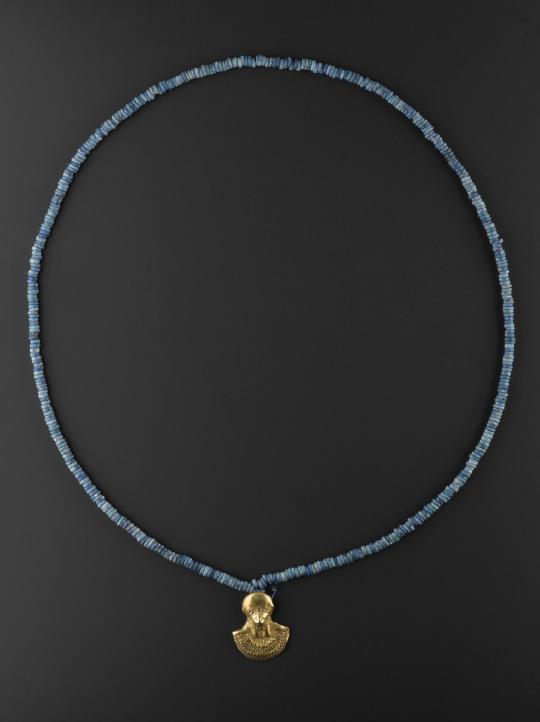

Egyptian necklace with a depiction of goddess Sekhmet, Late Period. From the collection of the National Museum of Scotland
469 notes
·
View notes
Photo



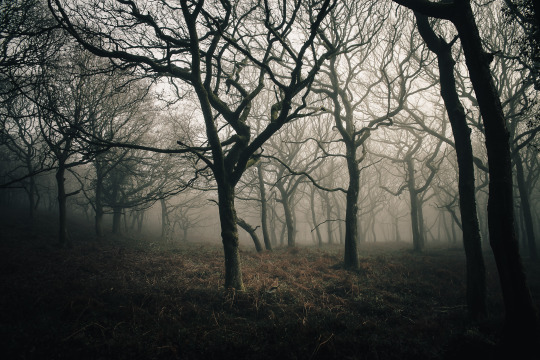
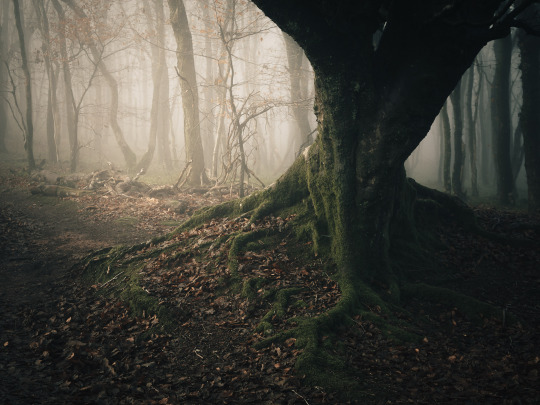

Great Wood Ramscombe, Somerset
Photographed by Freddie Ardley
8K notes
·
View notes
Text
would any more experienced practitioners be willing to give me a quick rundown on how to cast a circle?
71 notes
·
View notes
Text
Research Master List - Folk Magic
I’ve been wanting to talk more about my craft for months however a lot of what I do I would not feel comfortable giving away to anyone who I wasn’t specifically teaching. Instead I’ve decided to make this list with a few things my journals hold information about in hopes of giving some beginner practitioners a little guidance.
If you are completely new to witchcraft I recommend to start with this video: click here
Basics:
Basics Aren’t Basic
Centering
Grounding
Cleansing (video 1, video 2)
Wards (site 1, site 2)
Work spaces and Sacred Spaces (altars)
Banishment (site 1, site 2)
Binding
Knot Magic
Candle Magic
Sigils (video 1, video 2)
Art magic
Books:
Sister Karol’s Book of Spells, Blessings and Folk Magic by Karol Jackowski
Backwoods Witchcraft: Conjure & Folk Magic from Appalachia by Jack Richards
Italian Folk Magic: Tue’s Kitchen Witchery by Mary-Grace Fahrun
American Brujeria: Modern Mexican American Folk Magic by J. Allen Cross
Of Blood and Bones: Working with Shadow Magick & the Dark Moon by Kate Freuler
The Green Witch by Arin Murphy-Hiscock
Slavic Witchcraft: Old World Conjuring, Spells & Folklore by Natasha Helvin
Traditional Witchcraft: A Cornish Book of Ways by Gemma Gary
Keep reading
917 notes
·
View notes
Text
The best crystals for... Part 3 🤍
Part 1
Part 2
@lovebyluna on instagram
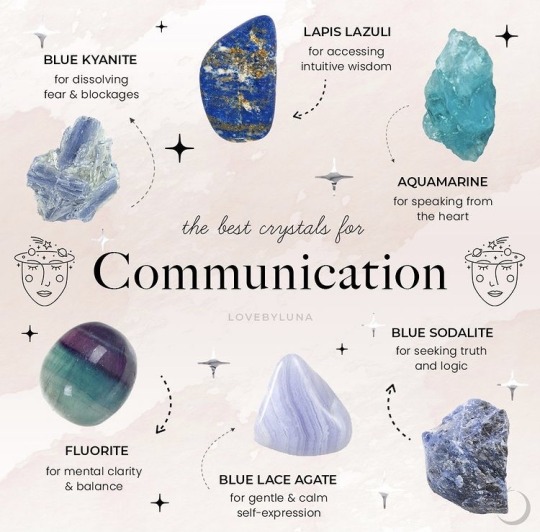

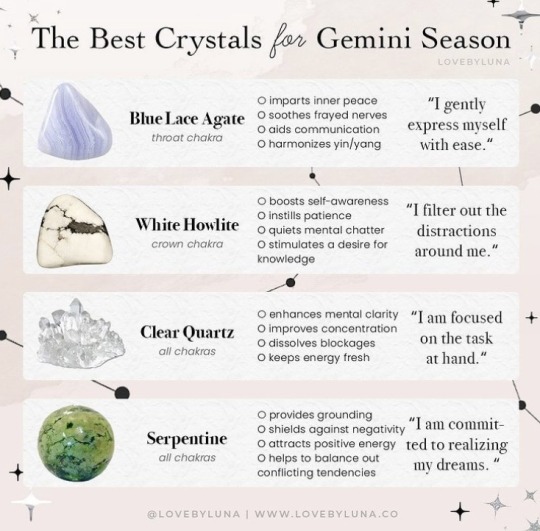
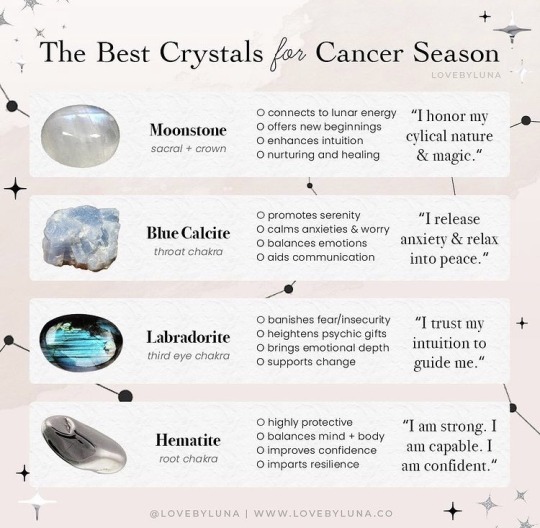
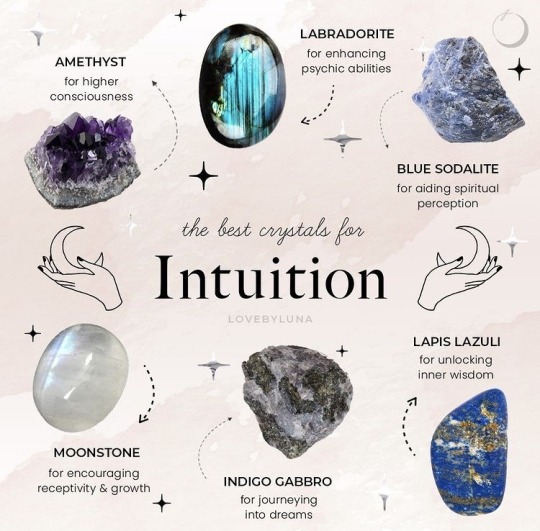
4K notes
·
View notes
Text

Summer Solstice Altar 🌞🌻🍂🌾🍃✨
Ideas for decorating your altar:
✨yellow, orange, or beeswax candles.
✨oak leaves, abundance of herbs, plants or summer incense blends.
✨dried orange slice ornaments and citrus scents or fruit offerings.
✨sunflower wreaths, sun catchers, and garlands, crystals.
✨many flowers such as wildflowers, sunflowers, daisies or lavender.
✨and of course your basic altar tools, tarot cards, cauldron, book of shadows or grimoire.
🔆 make sure you FOLLOW for more 🔆
756 notes
·
View notes
Text
Local Practice Series 1: Build a relationship with your land by investigating and investing in your region
I think one of the biggest and most important things you can do when beginning to localize your witchcraft or pagan practice is understanding your ecological region. Witches and pagans have an earth-based spirituality or practice. That means connecting with where you are on this earth, and how you integrate and embed yourself into that place. Part of that means being able to identify:
Indigenous flora (plants) and fauna (animals)
Interesting and important landforms and sites
Where indigenous flora, fauna, and landforms may be under threat
Ways you can protect and conserve your local region’s natural areas, landforms, and indigenous flora and fauna
That seems like a lot, right? And where do you start? How do you do any of that without getting overwhelmed? Same way you eat an elephant - one bite at a time.
Begin by identifying your local ecological region
Search for “Natural regions and subregions of [insert your state/county/province here]” in your favourite search engine, and you should get a number of links listed. Your best bet is through your state/county/provincial parks websites, because they should have some content about the regions they service. For instance, when looking for my region, Calgary, Alberta, I’ve found this super useful document:
Natural Regions and Subregions of Alberta: A Framework for Alberta’s Parks
It not only identifies the different regions and subregions, but the landforms present, common indigenous animals and vegetation, as well as rare or endangered animals that depend on the regional environment. These types of parks documents give a great overview of what kind of a ecological environment you live in, and all the highlights of them from a regional perspective. For where I live in Calgary, we’re part of the Alberta Grasslands region, specifically the Foothills fescue.
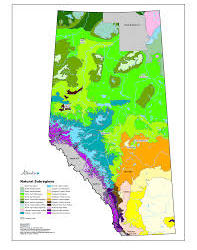
Additionally, consider downloading Seek by iNaturalist on your phone, which is a well-used and helpful app for identifying plants and animals in your region, and also gives suggestions of the types of flora and fauna you might encounter. It partners with the California Academy of Sciences, National Geographic, Our Planet: Netflix, and the World Wildlife Foundation. It provides challenges, allows you to note observations, provides achievements, and so forth! It’s a really handy app to have, in general. Credit for this one goes to another commenter on tumblr who referenced it on another localizing your practice post (I believe by @will-o-the-witch).

Your Parks department in general will have a lot of great information about the land you live on and work with, even if you live in an urban environment, like me. For instance, I can find information for self-guided walking tours, guided walking tours, natural areas, parks, volunteer opportunities, events, and so forth, from my city’s parks department page. If you start nowhere else, start here. Visiting your local parks, exploring your city or town, engaging with the land through things like river and road-side clean-up - these are all ways to begin building a relationship with your community, and the land you live on and work with.
Your city, like mine, might have a terrible and labyrinthine website where it’s impossible to find individual pages through the site architecture, but google is your friend! Google “Wild animals in [insert the name of your city/town/]” and your search should result in at least a few pages which can provide more information. Your city or town’s parks department should also point out any animals of interest, and give information about them, as well as conservation information, and likely, helpful resources for living with those animals, ensuring your safety, or ensuring theirs! As an example, when I google for Calgary, I get this:
Wild animals in Calgary’s natural areas
Which is a great overview of the types of wildlife I can encounter in the city, and points me to something super cool – bat conservation! Before I discovered this page, I had no idea that my region even supported a large number of bats! Now, I know that bat conservation is important and necessary. While it can be super overwhelming and lead to a lot of executive dysfunction/cognitive overload to try to protect all the ecological concerns, conserve all the landforms, flora, and fauna that need conservation, and engage in multiple volunteer opportunities, I want to tell you that it’s okay to just pick one. Even just reading about it or learning about it. Something that sparks your interest, something that’s manageable for you to do. In my area, for me, there are two things I’m super interested in, now that I’ve found out this information:
Volunteer riverside clean-up
Bat conservation (AKA building and setting up bat houses!)
I work a lot with the Bow, Elbow, and Sheep rivers. I walk their shores, I collect their stones, I swim in them, I use them as delivery mechanisms for spells and I call on their power, and the power of their genus loci (as opposed to the indigenous spirits, though I honour and awknowledge them when working with these rivers) for certain workings. Whenever I walk along them, I’ll pick up any trash I see, as an offering. Doing a more concerted riverside clean-up? Big offering! It’s a great way to show the spirits of place that you mean what you say, and that you’re someone they can trust with their power.

I love bats. I’ve always loved bats – maybe it’s the witch in me. Discovering that bat conservation was relatively simple, also, was a wonderful thing! If I don’t have the energy, I can donate a small amount to a foundation (or a large amount), I can join a conservation society and pay membership fees, or I can make or buy a bat house and install one on my property. However, in anything, there may be snags, and you might need to come up with creative workarounds. For instance, I can’t install a bat house on my tiny apartment balcony. But I do know of a lovely park that has the right kind of environment to support a bat house, and a local community garden that would benefit from having one. Those are two opportunities to do even more good than putting a bat house on my balcony. So I took ten minutes and emailed - firs the city, to see if there was any chance I could get permission to install a bat house in the park, and second, the community garden, for the same.
Instead of just spiritually connecting with the rivers and with the bats, by localizing my practice and engaging in building a relationship with the rivers and the bat population, I’m actively connecting on intellectual and physical levels. I am honouring and offering to the spirits of the animals and the rivers. I’m investing in them, in hopes that with consistency, they will invest in me, too. What ecological region do you live in? What local indigenous plants and animals are you drawn to? What kind of conservation/volunteer/protection efforts are you considering (or are actively) engaging in? How have you built a relationship to the land you live on and work with? Let me know! I’d love to hear! xoxo, Delta
109 notes
·
View notes
Text
The Witch at Midsummer
This post is the fourth in a series of posts exploring and celebrating witch archetypes at the eight seasonal festivals.

The festival of Midsummer celebrates the summer solstice, the longest day of the year. It has long had an association with the world of Faerie in the British Isles. The origin of the connection between the world of Faerie and the Midsummer holiday is unclear. At its core, Midsummer is a liminal day, though it may not seem like one upon first glance. Unlike Halloween, which falls between summer and winter, and May Day, which falls between winter and summer, Midsummer marks the end of spring and beginning of the summer season. It is a time of shifting priorities. In England, Ireland, and Wales, it was one of the four quarter days marking the times when accounts had to be settled. It marked the shift between the planting the season and the summer harvest. On one side of Midsummer is spring and light, on the other, the shift toward the harvest and a time of increased darkness. Because Midsummer is the summer solstice, the longest day, every day after it must be progressively darker until the winter solstice in mid-December.
In the old system of belief, the fairies and witches and other spirits enjoyed darkness. The festivals of Halloween and Christmas were times of darkness and were considered to be days when wild spirits would cause mischief. May Day, sometimes called Walpurgisnacht, was another one of their feast days. Some believe it would have been a kind of last hurrah for these beings before the light and cheerful summer months. Midsummer marks a time when periods of darkness begin to increase and this would have been a celebratory occasion. As Puck states in Shakespeare’s A Midsummer Night’s Dream, fairies travel “…By the triple Hecate’s team,/From the presence of the sun/Following darkness like a dream…”

The witch has, historically, been connected with the realm of Faerie. For this festival, let us discuss the witch as a fairy-being and the witch as a shaman. As Gemma Gary notes in her book The Devil’s Dozen, the connection between the fairies, the Devil, and the witch herself was not always made clear in old folklore. The witch, who has undergone the process of initiation, is closer to the realm of the fairies, closer to the Other World, than other living beings. The initiation of a witch is a death-and-rebirth style initiation. These kinds of initiations are found throughout the world in various cultures. For the witch, a physical initiation by other witches may occur, if she chooses to seek out other witches and join a coven. This ritual may involve blindfolds, the binding of the arms or legs with cords, and a ritual threat of some variety. The removal of the cords and the blindfold mark a rebirth. On the spiritual plane, the witch always experiences an initiation by the spirits, whether she seeks out other witches or not.
This means a sort of spiritual death and rebirth. Many witches report that when they begin to practice witchcraft, their lives fall apart in a very real, very physical way, only to be puled back together in a more elegant, witchier order. The spirits break apart the spirit of the witch and stitch it back together. The initiated witch may live on our plane, but she has one foot permanently in the land beyond the veil.
It is worth noting here that many superstitions state that individuals who have near-death experiences may gain the ability to peer into the Other World. In England, it was once held that babies born with a caul have the ability to see ghosts or become witches. The baby, being born with a veil of amniotic sac, is not born fully into this world and is marked by the presence of that which came before.
The Irish fairy doctors, according to WB Yeats, were individuals that may have been especially loved by the fairies. In his book Fairy and Folk Tales of the Irish Peasantry, Yeats claims that, “the most celebrated fairy doctors are sometimes people the fairies loved and carried away, and kept with them for seven years; not that those the fairies’ love are always carried off–they may merely grow silent and strange, and take to lonely wanderings in the ‘gentle’ places.” This is, in a way, an initiation by the spirits - the fairies - who forever mark the practitioner as being “other.” It is worth mentioning here that the Irish made a great distinction between the witch and the fairy doctor, the former practicing baneful magic and the latter practicing healing magic primarily. Considering the subject at hand, it did feel significant to mention this intriguing piece of folklore.
Because she has been taken by the spirits and belongs, at least in part, in the land of the spirits, the magical practitioner (whether she identifies as a witch or a fairy doctor) is able to communicate with spirits and even to cross the border between our world and their world. Here we may discuss the hedge witch.
The phrase “hedge witchery” is used to describe a variety of different practices, but at her core, the hedge witch is one who jumps “over the hedge.” That is, she travels between this world and the Other World. This may be done with the use of aids, especially herbal ones. She is, after all, a hedge witch. She may utilize flying ointments, which are worthy of a write-up all their own. Flying ointments are ointments, usually made with a base of beeswax or lard, that contain plant matter of an entheogenic nature. The word entheogenic denotes plants that are hallucinogenic, but are primarily used for spiritual pursuits. To the witch, this often means the plants of the Solanaceae family and the genus Artemisia - belladonna, henbane, mandrake, datura, wormwood, and mugwort. Flying ointments may contain balm of Gilead, cannabis, and other plant matters. The historical witch may have other methods to induce a trance state. She may have used body movements - dancing, running, shaking. She may have used drumming and rhythmic noises, as well.
The hedge witch essentially practices the art of astral projection, sometimes called flying or travelling. Though there is some debate in the community as to whether these phrases refer to different practices, these terms are all quite similar in nature. If one masters the art of astral projection, the ability to fly (with or without entheogenic aids) is certainly within one’s wheelhouse.
Why does the hedge witch fly over the hedge? Surely she engages in more than supernatural tourism. She is a kind of shaman, as is the fairy doctor and the historical witches who predate the term “hedge witch.” By communing with the spirits, these practitioners used spiritual means to affect the physical world. A witch who can cross the boundary between our physical world and the Other World can communicate with the spirits or fairies on the other side. She can work with these spirits to change the everyday, waking world. This is the great benefit of working with fairies. We are (mostly) corporeal. They are not. They possess a strange and dangerous magic all their own.

Of course, working with fairies is not without its hazards. They can be capricious and live by rules that are incomprehensible to humans (though I must add that surely the rules of our society are nonsensical to them, as well). The classic rules of the land of Faerie do apply here - do not take their food, do not dance in their circles, do not make impossible, and never, ever say “thank you” to a fairy. If one can master these Wonderland rules, working with the Fae can be highly beneficial.
The Fae are excellent teachers of the magical arte. They can heal the sick and can do great harm to one’s enemies. When they are angered, they can be merciless, spreading disease and destruction. They can bless those they love with generous gifts, including money. They can perform chores and small tasks and can lend their hands to spells, if they feel like it.
In some systems of belief, all witches essentially work with the Fae. Some believe the Devil to be a Fairy King. Some believe the fairies to be fallen angels or the ancestors. Anyone working with these entities would, by this logic, be working with the Fae by extension. On Midsummer Night, let us remember that the door to the Other World is always open. We have the power to access it and see what lies beyond, if only we dare.
1K notes
·
View notes
Photo
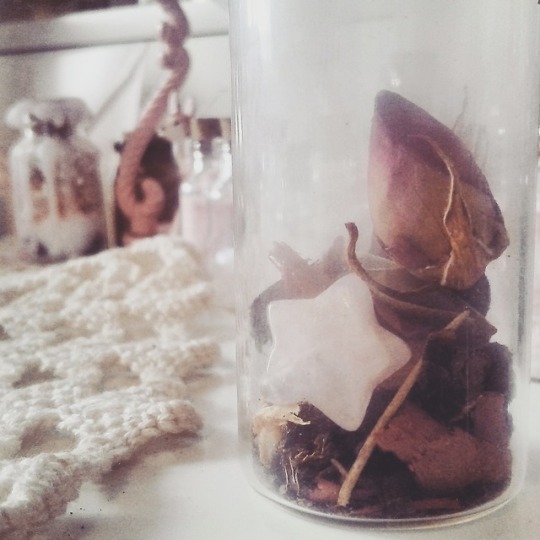

🌟 sweet thoughts ritual jar 🌹
gather rose petals, rose quartz, and crumple bay leaf into a jar. cover partially and fill with incense smoke. release the smoke when it’s charged with the intent you want to put out into the world
i’ve seen a few posts involving incense smoke with spell jars and i just had to give it a try
5K notes
·
View notes
Text
"BETRAYER" Hex.
Hey, y'all! So It Is!
I don't know about y'all- but I have been through some major betrayal in my life; and as of late, so, I just let it all out in this incantation anyone can use (with caution) to cast upon any and all betrayers of yours.
I firmly believe that "black" or "dark" magick can and should be used for protection and JUSTICE. So for all of you love and light practitioners; move along if you cannot respect this work and power I am sharing with a mass audience. But, of course I cannot stop your disrespect- free-will and all.
Below I will instruct you on how I, personally, cast this hex and bring life to the incantation.
If you have an item (any item) from your betrayer, grab it. Hold onto it and send this incantation, audibly or not so, into that item.
MAY THE HORSE YOU RIDE SO HIGH QUAKE AND KNOCK YOU DOWN, LEVELED WITH JUSTICE.
MAY ABUSE OF LOVE BE DONE BACK UNTO YOU ONE HUNDRED FOLD.
MAY YOU BE TORTURED BY LONELINESS AND GRIEF.
MAY YOUR BLIND EYE(S) BRING SIGHT TO (MY) WRATH.
MAY COMFORT LOOSEN IT'S EMBRACING OF YOU.
MAY YOU LOSE THE GAIN YOU HOLD CLOSER THAN SOURCE.
MAY YOU LOSE YOURSELF!
MAY YOU LOSE YOURSELF!
MAY YOU LOSE YOURSELF!
SO IT IS!
Now take that item, if you have one, and burn it.
Happy hexing. So It Is!
[I AM NOT LIABLE FOR ANY AND ALL RESULTS; THE RESPONSIBILITY, ANY AND ALL CONSEQUENCES, FALL UPON THE CASTER.]
12 notes
·
View notes
